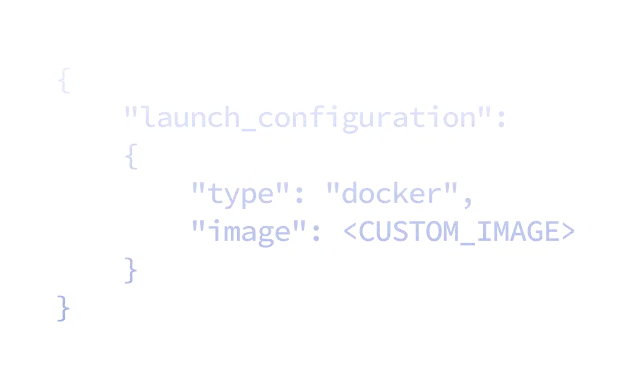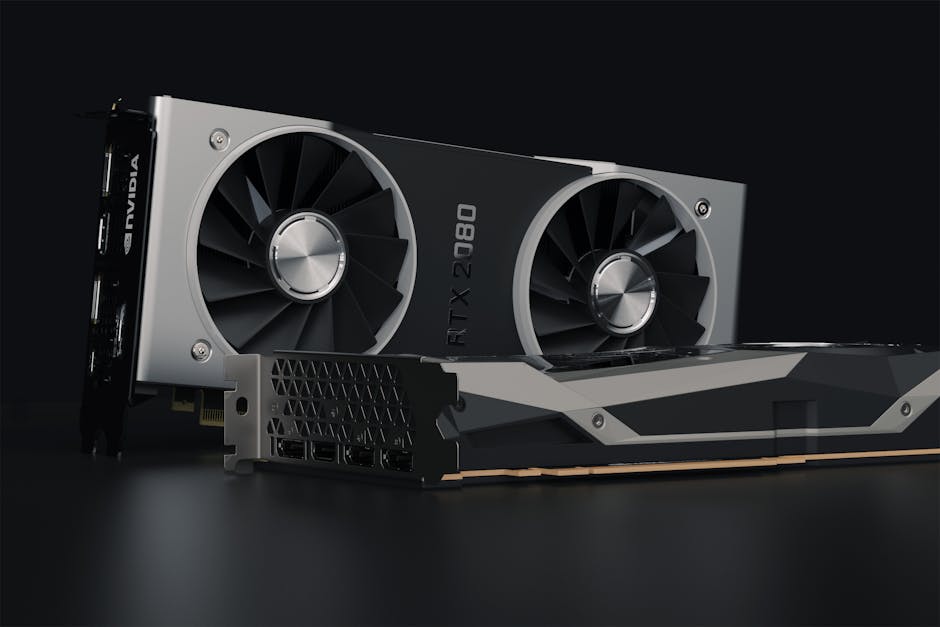
Get Started with CUDA on Google Cloud: A Quick Tutorial

Get Started with CUDA on Google Cloud: A Quick Tutorial
If you're looking to install CUDA on Google Cloud, you've come to the right place. To quickly install CUDA on Google Cloud, follow these steps:
- Create a Google Cloud account and sign up for the free $300 credit.
- Set up a VM instance with the desired GPU and OS, then connect via SSH.
- Install CUDA following the specific driver and toolkit installation commands.
- Verify the installation to ensure everything is working correctly.
CUDA (Compute Unified Device Architecture) is a parallel computing platform by NVIDIA that harnesses the power of GPUs to accelerate compute-intensive tasks. By leveraging CUDA on Google Cloud, you can significantly speed up your machine learning, scientific computing, and generative AI applications. With Google Cloud's flexible pricing and powerful infrastructure, you can optimize your workloads and only pay for what you use.
PoolCompute offers a streamlined way to manage and deploy GPU-enabled instances. It’s a user-friendly platform that helps you with everything from VM creation to running complex GPU workloads, ensuring low cost and high performance. Their transparent pricing and minimal operational costs make it an ideal choice for data scientists needing scalable and reliable GPU resources.
Get started today by creating your first GPU-enabled VM and see how easily you can install CUDA on Google Cloud!

What is CUDA and Why Use It on Google Cloud?
CUDA (Compute Unified Device Architecture) is a parallel computing platform developed by NVIDIA. It allows you to harness the power of NVIDIA GPUs for general-purpose processing, making it a game-changer for a variety of compute-intensive tasks. But why should you use CUDA on Google Cloud?
Parallel Computing Power
CUDA turns your GPU into a highly parallel processor. This means it can handle thousands of threads simultaneously, which is perfect for tasks that require massive computational power. Think of it like having a supercomputer at your fingertips, but only paying for the time you use.
NVIDIA GPUs
Google Cloud offers a wide range of NVIDIA GPUs, including the H100, L4, P100, P4, T4, V100, and A100. Each of these GPUs is optimized for different types of workloads, from deep learning and AI to high-performance computing (HPC). This variety allows you to choose the best GPU for your specific needs and budget.
General-Purpose Processing
With CUDA, you can use GPUs for more than just graphics rendering. They can handle general-purpose tasks such as matrix operations, data sorting, and more. This versatility makes CUDA a valuable tool for a wide range of applications, including scientific computing and data analysis.
Artificial Intelligence (AI) and Machine Learning (ML)
AI and ML models often require significant computational power for training and inference. CUDA accelerates these processes, reducing the time it takes to train models and execute complex algorithms. For instance, tasks like image classification, video analysis, and natural language processing (NLP) become much faster and more efficient with CUDA on Google Cloud.
High-Performance Computing (HPC)
HPC applications, such as simulations and complex calculations, benefit immensely from CUDA's parallel processing capabilities. Whether you're conducting scientific research or running large-scale data analyses, CUDA on Google Cloud provides the computational muscle you need.
Flexible and Cost-Effective
Google Cloud offers flexible pricing and machine customizations, allowing you to optimize your workloads and only pay for what you use. With per-second billing, you can manage costs effectively, making it an ideal choice for both short-term projects and long-term deployments.
By leveraging CUDA on Google Cloud, you can open up the full potential of NVIDIA GPUs, accelerate your workloads, and achieve faster results. Whether you're working on AI, ML, or HPC, Google Cloud provides the infrastructure and flexibility to meet your needs.

Setting Up Your PoolCompute Account
Before you can start leveraging CUDA on PoolCompute, you need to set up your PoolCompute account. Here's a quick guide to get you started.
Create a Free Account
First, head over to the PoolCompute Platform and sign up for a free account. You'll need to enter your credit card details for verification, but don't worry—you won't be charged initially. As a new user, you'll receive $300 in free credits to explore PoolCompute services.
Upgrade to a Paid Account
To use GPU resources, you'll need to upgrade to a paid account. This step involves verifying your payment details and confirming your identity. The upgrade process may take a day or two, so plan accordingly.
Increase Your GPU Quota
After upgrading, you need to increase your GPU quota. By default, new accounts have limited access to GPU resources. To request a quota increase:
- Go to the PoolCompute Console.
- Steer to IAM & Admin > Quotas.
- Find the GPUs (all regions) quota and click on Edit Quotas.
- Submit a request for the desired number of GPUs and provide a justification for your request.
PoolCompute typically processes these requests within a few days.
By following these steps, you'll have your PoolCompute account set up and ready to create a GPU-enabled VM instance. Next, we'll walk you through creating a GPU-enabled VM instance to start running your CUDA workloads.
Creating a GPU-Enabled VM Instance
To get started with CUDA on PoolCompute, you need a GPU-enabled VM instance. This section will guide you through the process step-by-step.
Step 1: Create a VM Instance
First, log into your PoolCompute Console. Select your project or create a new one.
- Steer to Compute Engine: In the left-hand menu, click on Compute Engine > VM instances.
- Create a New Instance: Click on the Create button.
Step 2: Configure Your VM
CPU Cores and GPU Selection
- Choose Machine Type: Select the machine type that fits your needs. For instance,
n1-standard-8provides 8 vCPUs. - Add GPU: Scroll down to the GPUs section. Click on Add GPU and choose your desired GPU type (e.g., NVIDIA A100).
OS Selection
- Boot Disk: Under the Boot disk section, click on Change. Choose Ubuntu 16.04 LTS for compatibility with CUDA 10.0.
- Disk Size: Set the boot disk size. 200 GB is recommended.
Firewall Rules
- Firewall: Tick the boxes for Allow HTTP traffic and Allow HTTPS traffic if you plan to access your instance through these protocols.
Additional Settings
- Management, Security, Disks, Networking, Sole Tenancy: Click this option to expand additional settings.
- Boot Disk Delete: Disable the Delete boot disk when instance is deleted option under the Disks tab to prevent data loss.
Step 3: Create and Access Your Instance
- Create the Instance: Once all settings are configured, click on the Create button at the bottom.
- Access via SSH: After the instance is created, click on the SSH button next to your instance to open a terminal.
Important Note
ALERT!! Your instance is now running, and you are being charged. Ensure you STOP the instance when not in use to avoid unnecessary costs.
By following these steps, you will have a GPU-enabled VM instance ready to install CUDA on PoolCompute. Next, we’ll walk you through the installation of CUDA and cuDNN.
Installing CUDA on Google Cloud
Step-by-Step Guide to Install CUDA
Now that you have a GPU-enabled VM instance, let's install CUDA and cuDNN.
Step 1: Create VM and Select GPU
- Log into Google Cloud Console: Select your project.
- Steer to Compute Engine: Go to Compute Engine > VM instances.
- Create a New Instance: Click on Create.
- Configure Machine:
- Machine Type: Choose
n1-standard-8for 8 vCPUs. - Add GPU: Scroll to GPUs, click Add GPU, and pick
NVIDIA P100.
- Machine Type: Choose
- Select OS and Boot Disk:
- OS: Choose Ubuntu 16.04 LTS.
- Boot Disk Size: Set to 200 GB.
- Firewall: Enable Allow HTTP traffic and Allow HTTPS traffic.
- Additional Settings:
- Boot Disk Delete: Disable Delete boot disk when instance is deleted.
Step 2: Install CUDA
- Access via SSH: Click on the SSH button next to your instance.
- Update Package Lists:
sudo apt-get update - Download CUDA Toolkit:
wget https://developer.download.nvidia.com/compute/cuda/10.0/Prod/local_installers/cuda-repo-ubuntu1604_10.0.130-1_amd64.deb - Install CUDA Toolkit:
sudo dpkg -i cuda-repo-ubuntu1604_10.0.130-1_amd64.debsudo apt-key adv --fetch-keys http://developer.download.nvidia.com/compute/cuda/repos/ubuntu1604/x86_64/7fa2af80.pubsudo apt-get updatesudo apt-get install cuda
Step 3: Install cuDNN
- Create NVIDIA Developer Account: Sign up at NVIDIA Developer.
- Download cuDNN: Download the cuDNN version compatible with CUDA 10.0.
- Install cuDNN:
tar -xzvf cudnn-10.0-linux-x64-v7.6.5.32.tgzsudo cp cuda/include/cudnn*.h /usr/local/cuda/includesudo cp cuda/lib64/libcudnn* /usr/local/cuda/lib64sudo chmod a+r /usr/local/cuda/include/cudnn*.h /usr/local/cuda/lib64/libcudnn*
Step 4: Verify Installation
Check CUDA Version:
nvcc -VThis should display CUDA 10.0.
Check NVIDIA Driver:
nvidia-smiThis should show the GPU details and driver version.
Common Installation Issues and Fixes
libcudnn.so Error: You might encounter the error:
/usr/local/cuda/lib64/libcudnn.so.7 is not a symbolic linkFix:
sudo rm /usr/local/cuda/lib64/libcudnn.sosudo ln -s /usr/local/cuda/lib64/libcudnn.so.7 /usr/local/cuda/lib64/libcudnn.soDriver Issues: Ensure the NVIDIA driver is correctly installed. If issues persist, reinstall the driver using:
sudo apt-get --purge remove nvidia-*sudo apt-get install -y nvidia-driver-<version>By following these steps, you will have successfully installed CUDA on Google Cloud.
Next, let's explore how to run GPU workloads on your new setup.
Running GPU Workloads on PoolCompute
With CUDA and cuDNN installed on your PoolCompute VM, you're ready to run GPU workloads. PoolCompute's powerful GPUs are ideal for deep learning, image classification, video analysis, and natural language processing (NLP). Let's explore how you can leverage these capabilities.
Deep Learning Models
Deep learning models require significant computational power. PoolCompute GPUs like the NVIDIA A100 can accelerate training and inference processes.
- Training Models: Use frameworks like TensorFlow or PyTorch to train models faster. For example, a convolutional neural network (CNN) for image recognition can train in hours instead of days.
- Inference: Deploy trained models for real-time predictions. For instance, a sentiment analysis model can process thousands of text inputs per second.
Image Classification
Image classification involves categorizing images into predefined classes. GPUs can handle the massive parallel computations needed for this task.
- Setup: Use pre-trained models like ResNet or VGG and fine-tune them on your dataset.
- Training: Batch process images to use the full capacity of your GPU.
- Inference: Quickly classify new images, making your application responsive and efficient.
Video Analysis
Analyzing video frames in real-time is resource-intensive. PoolCompute GPUs can process multiple frames simultaneously.
- Use Cases: Applications include security surveillance, sports analytics, and autonomous driving.
- Frameworks: Use libraries like OpenCV or deep learning frameworks to analyze video streams.
- Performance: Achieve higher frame rates and lower latency in your video processing pipeline.
Natural Language Processing (NLP)
NLP tasks such as text generation, translation, and sentiment analysis benefit greatly from GPU acceleration.
- Training: Train large language models like GPT or BERT on vast datasets.
- Inference: Deploy these models to handle real-time text inputs efficiently.
- Libraries: Use frameworks like Hugging Face Transformers to simplify model implementation.
Dataproc Cluster
For large-scale data processing and machine learning, consider using PoolCompute Dataproc with GPUs.
- Cluster Setup: Attach GPUs to both master and worker nodes in your Dataproc cluster.
- Workloads: Accelerate tasks like data preprocessing, feature extraction, and model training.
- Benefits: Leverage the combined power of distributed computing and GPU acceleration.

By running your GPU workloads on PoolCompute, you can achieve faster training times, real-time inference, and scalable data processing.
Next, let's discuss how to optimize GPU performance and costs on PoolCompute.
Optimizing GPU Performance and Cost
When running GPU workloads on PoolCompute, optimizing performance and cost is crucial. Here’s how you can make the most out of your cuda google cloud setup.
Flexible Pricing
PoolCompute offers flexible pricing to match your budget and workload needs. With per-second billing, you only pay for what you use. This means you can run intensive tasks without worrying about long-term commitments.
- On-Demand Pricing: Ideal for short-term, variable workloads.
- Preemptible VMs: Get up to 80% off for workloads that can tolerate interruptions.
- Committed Use Contracts: Save up to 57% by committing to using certain resources for 1 or 3 years.
Machine Customizations
Customizing your VM instances can help you balance performance and cost. PoolCompute allows you to tailor the processor, memory, disk, and GPU configuration to your specific needs.
- Custom Machine Types: Choose the exact number of vCPUs and memory needed.
- GPU Options: Select from a range of GPUs like NVIDIA H100, L4, P100, P4, T4, V100, and A100 to find the right balance of performance and cost.
- Disk Options: Use high-performance disks to match your data throughput needs.
Per-Second Billing
With per-second billing, you can start and stop your instances anytime, paying only for the seconds you use. This is particularly useful for:
- Testing and Development: Spin up instances for quick tests without incurring high costs.
- Batch Processing: Run large jobs in smaller time windows, optimizing resource usage.
- Scaling: Dynamically scale your resources based on real-time demand.
Workload Optimization
Optimizing your workload can dramatically improve performance and reduce costs. Here are some strategies:
- Use Gradient Checkpointing: Save memory by storing fewer intermediate results during training.
- Clear Unnecessary Tensors: Free up GPU memory by deleting tensors that are no longer needed.
- Leverage Inplace Operations: Perform operations in-place to save memory and reduce overhead.
- Kernel Fusion: Combine multiple small operations into larger, more efficient ones using libraries like TensorRT.
- Asynchronous Operations: Use CUDA streams to overlap computation and data transfer, keeping your GPU busy.
- Profiling and Optimization: Regularly profile your GPU usage with tools like NVIDIA Nsight Systems or PyTorch Profiler to identify bottlenecks and optimize your code.
By leveraging these techniques, you can ensure that your cuda google cloud setup is both cost-effective and high-performing.
Next, let's address some frequently asked questions about using CUDA on PoolCompute.
Frequently Asked Questions about CUDA on Google Cloud
What is CUDA in cloud computing?
CUDA (Compute Unified Device Architecture) is a parallel computing platform and API model created by NVIDIA. It allows developers to use NVIDIA GPUs for general-purpose processing. This is particularly useful for tasks that benefit from parallel execution, such as AI, machine learning, and high-performance computing (HPC).
How to install CUDA on Google Cloud?
To install CUDA on Google Cloud, follow these steps:
- Create a VM Instance: Go to the Google Cloud Console and create a new VM instance. Choose the machine type and GPU you need, like the NVIDIA P100 or T4.
- Select GPU: In the Machine Configuration, add a GPU to your instance.
- Install GPU Drivers: Once your VM is running, install the necessary GPU drivers. You can find the installation script on the NVIDIA website or Google Cloud documentation.
- Install CUDA Toolkit: Download and install the CUDA Toolkit. Follow the instructions for your specific Ubuntu version.
- Install cuDNN: Download cuDNN from the NVIDIA website and install it.
- Verify Installation: Run
nvcc -Vto check the CUDA version andnvidia-smito verify the GPU is recognized.
How to get GPU on Google Cloud?
- Google Cloud Console: Log in to your Google Cloud Console.
- VM Instances: Steer to the Compute Engine section and click on "VM instances."
- Create Instance: Click on "Create Instance" to start configuring your VM.
- Machine Configuration: Choose the number of CPU cores, memory, and add a GPU under the "GPUs" section.
- GPU Selection: Select the type of NVIDIA GPU you need, such as P100, T4, or V100.
- Finalize and Create: Complete the rest of the VM configuration, then click "Create."
By following these steps, you can quickly set up a GPU-enabled VM instance on Google Cloud, making it easy to run CUDA-based applications.
Next, let's dive into running GPU workloads on Google Cloud.
Conclusion
In summary, setting up CUDA on Google Cloud is a straightforward process that can significantly improve your computational tasks, from AI and machine learning to high-performance computing. By leveraging the power of NVIDIA GPUs, you can speed up your workloads and achieve better performance.
At PoolCompute, we understand the challenges of accessing affordable GPU resources. Our platform is designed to democratize high-performance computing by creating a global GPU marketplace. This marketplace aims to eliminate the inefficiencies of the current GPU market, providing you with affordable GPU resources that are just a few clicks away.
One of the key benefits of using our platform is the pay-by-the-second billing. This means you only pay for what you use, optimizing your costs and ensuring you get the best value for your money. Additionally, our decentralized computing approach allows us to pool global GPU resources, making large-scale compute power more accessible and cost-effective.
Ready to get started? Visit our GPU Service Page to explore more about our offerings and how we can help you achieve your computational goals.
By using PoolCompute, you can focus on what you do best—innovating and pushing the boundaries of what's possible with high-performance computing.
Decentralized computing for AGI.
Decentralized computing unlocks AGI potential by leveraging underutilized GPU resources for scalable, cost-effective, and accessible research.

